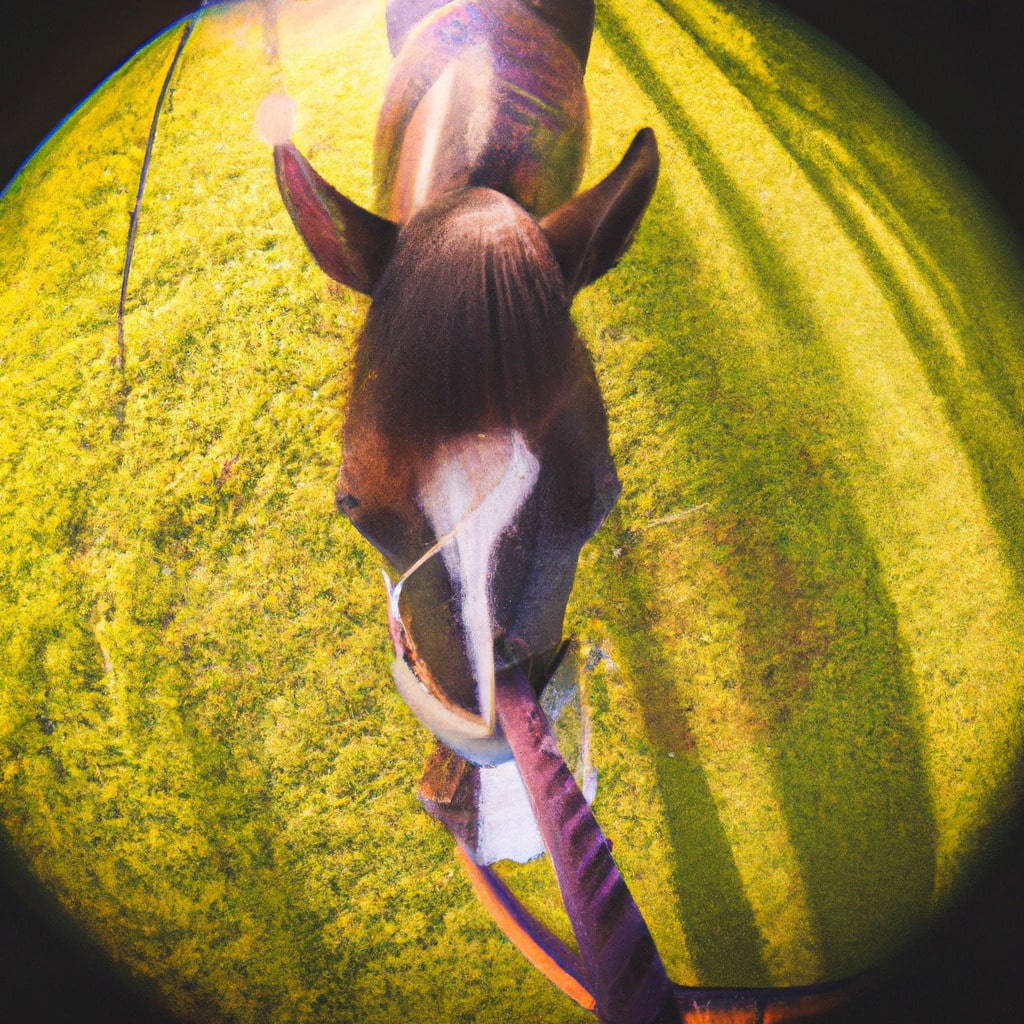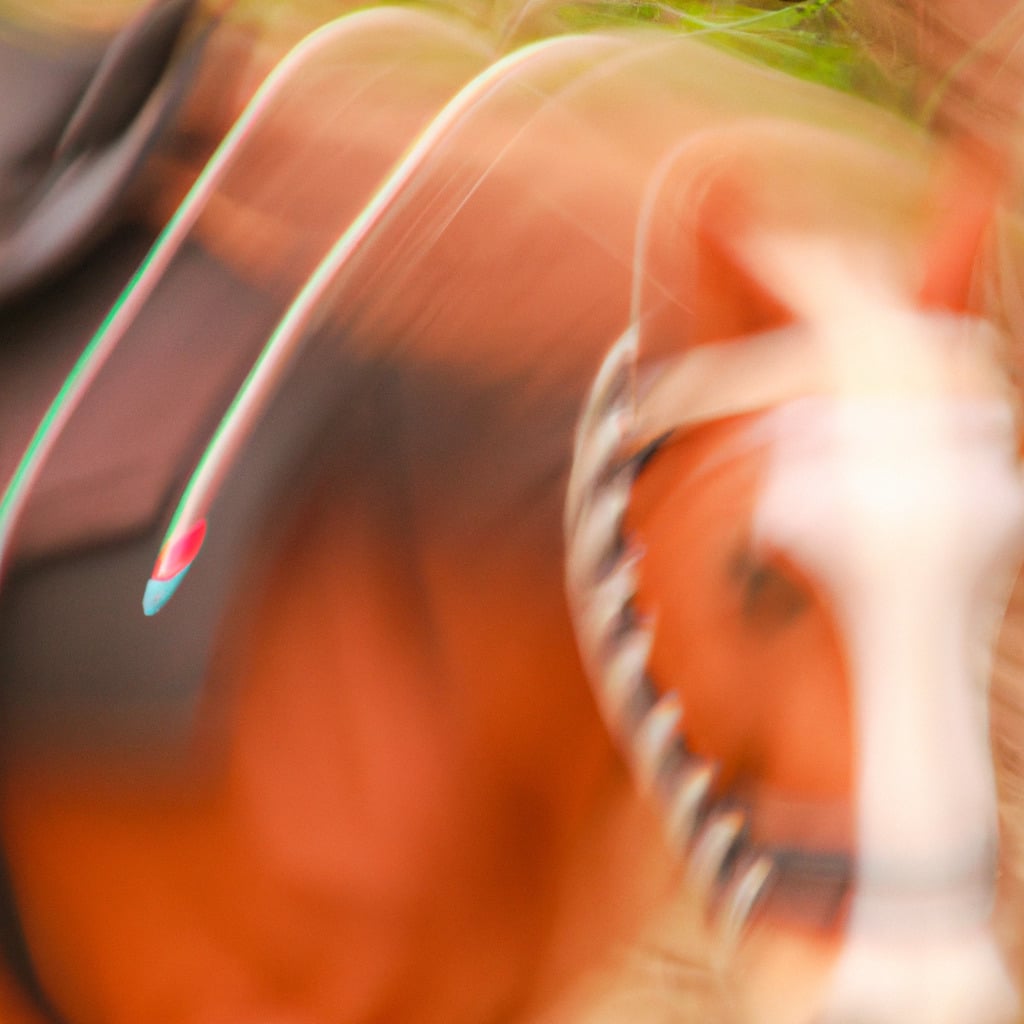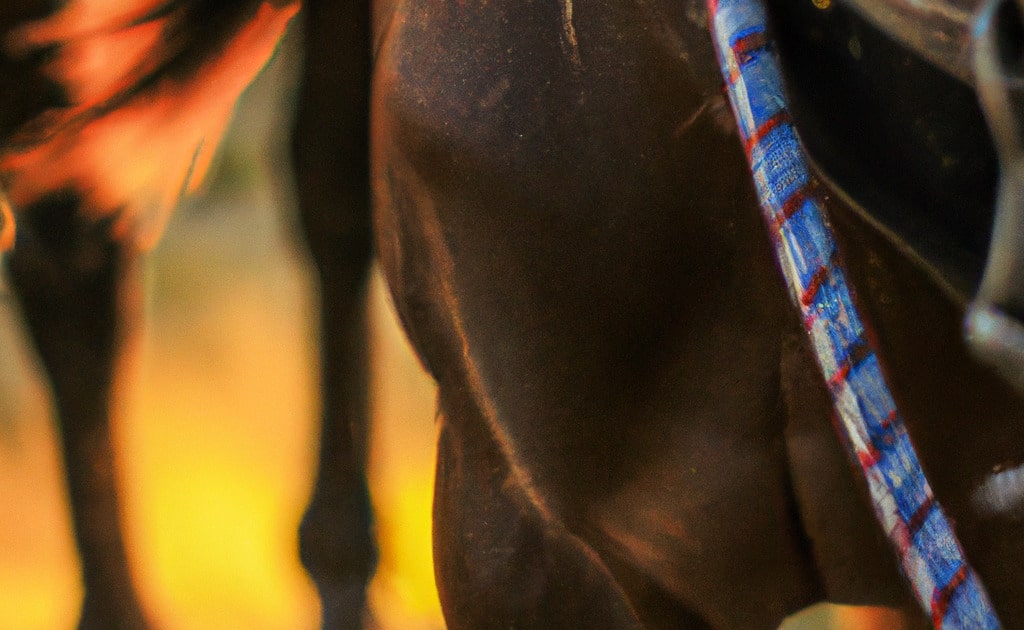Gaited horses, with their effortless and smooth gaits, have captivated equestrians for centuries.
These magnificent creatures possess a natural ability to perform unique and rhythmic movements that set them apart from other horse breeds.
But what lies behind their graceful strides and seamless transitions?
The secret lies in the world of horse bits, the essential pieces of tack that play a crucial role in communication between horse and rider.
In this comprehensive guide, we will delve into the fascinating realm of horse bits designed specifically for gaited horses.
From snaffles to curb bits, each type offers a different level of control, comfort, and effectiveness.
Whether you are a seasoned rider or a curious enthusiast, understanding the intricacies of these bits is key to unlocking the full potential of your gaited horse.
So, join us on this journey as we explore the various types of horse bits and discover how they can enhance your riding experience and improve your horse’s performance.
Get ready to witness the magic unfold as we uncover the secrets of horse bits for gaited horses!
Understanding the Basics of Horse Bits
Horse bits play a crucial role in equestrianism, serving as a means of communication and control between riders and horses. These metal mouthpieces are inserted into the horse’s mouth and attached to the bridle, allowing riders to convey commands and cues effectively.
The mechanics of how horse bits work are relatively simple. When the rider applies pressure to the reins, the bit exerts pressure on various parts of the horse’s mouth, such as the tongue, bars, and corners. This pressure can be applied in different ways, depending on the design and mechanics of the bit. Some bits work by direct pressure, while others utilize leverage or a combination of both. The goal is to achieve a balance between control and comfort, ensuring that the horse responds to the rider’s aids without experiencing any discomfort or pain.
When it comes to gaited horses, the choice of the right bit is crucial. Gaited horses have specific needs and sensitivities, and using the wrong bit can hinder their performance and cause discomfort. It is important to select a bit that allows the horse to maintain its natural gait while providing the necessary control and guidance.
One of the most commonly used bits for gaited horses is the snaffle bit. Snaffle bits are characterized by their direct action and lack of leverage. They consist of a jointed mouthpiece and a set of rings on either side. When the rider pulls on the reins, the pressure is evenly distributed across the horse’s mouth, making it a gentle and mild option. Snaffle bits are suitable for gaited horses that are responsive and require minimal control.
Another type of bit commonly used for gaited horses is the curb bit. Unlike snaffle bits, curb bits utilize leverage to exert pressure on the horse’s mouth. They consist of a mouthpiece, shanks, and a curb chain or strap. When the rider applies pressure to the reins, the shanks rotate, creating leverage and increasing the pressure on the horse’s mouth. Curb bits provide more control and are suitable for gaited horses that require a higher level of responsiveness and collection.
In addition to snaffle and curb bits, there are various other types of bits that can be used for gaited horses, such as the double bridle, the Pelham bit, and the Kimberwicke bit. Each of these bits has its own unique design and mechanics, offering different levels of control and communication.
It is important to note that the choice of the right bit for a gaited horse may vary depending on factors such as the horse’s training, conformation, and individual preferences. It is always recommended to consult with a knowledgeable trainer or equine professional to determine the most suitable bit for your gaited horse.
Now that we have explored the basics of horse bits and their relevance to gaited horses, let’s move on to the specific types of bits designed for these magnificent creatures. In the next section, we will discuss the snaffle bit in more detail and explore its variations and applications for gaited horses.

Exploring the Snaffle Bit for Gaited Horses
The snaffle bit is a versatile and commonly used bit for gaited horses, offering a gentle and direct means of communication between rider and horse. With its simple yet effective design, the snaffle bit is a popular choice among riders who want to maintain the natural gait of their horses while still having control and responsiveness.
The snaffle bit consists of a jointed mouthpiece and a set of rings on either side. When the rider applies pressure to the reins, the bit creates a direct and even distribution of pressure across the horse’s mouth. This allows for clear and precise communication between the rider’s hands and the horse’s mouth, facilitating smooth transitions and movements.
There are different variations of the snaffle bit that can be used for gaited horses, each with its own unique features and benefits. One common variation is the loose-ring snaffle bit. As the name suggests, the rings on this bit are loose, allowing for more movement and flexibility. This can be beneficial for gaited horses as it allows them to maintain their natural head carriage and freedom of movement, resulting in a more comfortable and relaxed ride.
Another popular variation is the eggbutt snaffle bit. This bit has fixed rings that prevent pinching and rubbing on the horse’s mouth. The egg-shaped connection between the mouthpiece and the rings provides stability and prevents the bit from sliding through the horse’s mouth. It offers a more stable and consistent contact for gaited horses, promoting better communication and control.
The D-ring snaffle bit is another commonly used option for gaited horses. It has fixed D-shaped rings on either side, which provide a more stable and consistent contact. The D-rings also help to prevent the bit from sliding through the horse’s mouth, offering a more secure fit and reducing the risk of discomfort or irritation.
When selecting a snaffle bit for a gaited horse, it is important to consider the horse’s individual needs and preferences. Some gaited horses may prefer a single-jointed snaffle, while others may respond better to a double-jointed or a mullen mouth snaffle. It is recommended to try different variations and observe the horse’s response to find the most suitable option for optimal performance and comfort.
In addition to the variations in mouthpieces, snaffle bits can also come in different materials. Stainless steel and copper are commonly used materials for snaffle bits. Stainless steel is durable and easy to maintain, while copper has a sweet taste that can encourage salivation and acceptance of the bit. The choice of material depends on the horse’s preferences and sensitivities.
It is important to note that the snaffle bit, like any other bit, should be used with proper technique and consideration for the horse’s comfort. Riders should have light and sensitive hands, avoiding harsh or excessive rein aids. Regular maintenance and proper fitting of the bit are also essential to ensure the horse’s well-being and prevent any potential discomfort or issues.
Now that we have explored the snaffle bit and its variations for gaited horses, let’s move on to the next section, where we will discuss the curb bit and its applications for these magnificent creatures.
Exploring the Curb Bit for Gaited Horses
The curb bit is a versatile and widely used bit for gaited horses, offering increased control and refinement in their movements. With its leverage action, the curb bit provides a higher level of responsiveness and collection, making it suitable for gaited horses that have advanced training and require precise cues.
The curb bit consists of a mouthpiece, shanks, and a curb chain or strap. When the rider applies pressure to the reins, the shanks rotate, creating leverage and increasing the pressure on the horse’s mouth. This leverage action allows for more precise and nuanced communication between the rider’s hands and the horse’s mouth, facilitating subtle cues and adjustments.
There are different variations of the curb bit that can be used for gaited horses, each with its own unique characteristics and applications. One common variation is the medium port curb bit. This bit has a medium-sized port in the mouthpiece, which provides tongue relief and encourages the horse to collect and engage its hindquarters. The medium port curb bit is suitable for gaited horses that have developed a higher level of collection and responsiveness, allowing for more refined movements and transitions.
Another popular variation is the low port curb bit. This bit has a lower port in the mouthpiece, offering less tongue relief and a milder action. The low port curb bit is suitable for gaited horses that are still in the early stages of training or those that have a sensitive mouth. It provides a more gentle and forgiving contact while still offering control and communication, allowing for a gradual progression in the horse’s training.
The cathedral port curb bit is a more specialized variation that is often used for highly trained gaited horses. It has a high and narrow port in the mouthpiece, offering maximum tongue relief and encouraging the horse to carry itself with elevation and self-carriage. The cathedral port curb bit requires a skilled and sensitive rider to properly utilize its potential, allowing for precise and refined movements in advanced dressage and performance.
When selecting a curb bit for a gaited horse, it is important to consider the horse’s level of training, responsiveness, and individual preferences. It is recommended to consult with a knowledgeable trainer or equine professional to determine the most suitable curb bit for your gaited horse, taking into account factors such as the horse’s conformation, temperament, and specific training goals.
In addition to the variations in mouthpieces, curb bits can also come in different shank lengths. Longer shanks provide more leverage and control, while shorter shanks offer a milder action. The choice of shank length depends on the horse’s level of training, the rider’s skill level, and the desired level of control and refinement. It is important to note that longer shanks require more experienced and educated hands to ensure proper and effective use.
It is crucial to use the curb bit with proper technique and consideration for the horse’s comfort. Riders should have light and educated hands, using subtle and precise rein aids to communicate with the horse. Harsh or excessive use of the curb bit can cause discomfort or pain to the horse, compromising its trust and willingness to perform. Regular maintenance and proper fitting of the curb chain or strap are also essential to ensure the horse’s well-being and prevent any unnecessary pressure or irritation.
Now that we have explored the curb bit and its variations for gaited horses, let’s move on to the next section, where we will discuss other types of bits that can be used for these magnificent creatures, providing further options for riders to enhance their communication and control.
In conclusion, the world of horse bits for gaited horses is a fascinating realm that offers a multitude of options to enhance the performance and communication between horse and rider. From the gentle and direct action of the snaffle bit to the increased control and refinement of the curb bit, each type of bit serves a unique purpose and provides a specific level of control and comfort.
Understanding the basics of how horse bits work and their relevance to gaited horses is essential for any rider or enthusiast. By selecting the right bit and using it with proper technique and consideration for the horse’s comfort, riders can establish a harmonious and effective partnership with their gaited horse.
It is important to remember that the choice of the right bit for a gaited horse may vary depending on factors such as the horse’s training, conformation, and individual preferences. Consulting with a knowledgeable trainer or equine professional is highly recommended to ensure the most suitable bit is selected, taking into account the horse’s unique needs and sensitivities.
Furthermore, riders should always prioritize the well-being and comfort of their horses. Regular maintenance, proper fitting, and educated hands are crucial in using bits correctly and preventing any unnecessary discomfort or pain. By treating the horse with kindness and respect, riders can establish a strong bond and trust with their gaited horse.
As we continue to explore the world of horse tack and equipment, it is fascinating to witness the advancements and innovations that aim to improve the riding experience for both horse and rider. The ongoing research and development in the field of equestrianism contribute to the evolution of horse bits, ensuring that they meet the needs of gaited horses and enhance their performance.
By understanding the different types of horse bits and their applications for gaited horses, riders can make informed decisions and contribute to their horse’s overall well-being and success. The right bit can make a significant difference in the horse’s comfort, responsiveness, and ability to perform their unique gaits.
So, whether you are a seasoned rider or a curious enthusiast, take the time to delve into the intricacies of horse bits for gaited horses. Expand your knowledge, consult with professionals, and experiment with different options to find the perfect bit for your gaited horse. By doing so, you can unlock the full potential of your gaited horse and embark on a journey of partnership and harmony.
Are you ready to embark on this journey and discover the perfect bit for your gaited horse?


